Do you want to learn how to block websites on Firefox? The Internet provides a wealth of information, entertainment, and resources to virtually anyone with an active connection. Unfortunately, you can also use it to access websites and other resources that are inappropriate, dangerous, or otherwise blocked by certain organizations.
Fortunately, there is a way to block these sites using Firefox, the free and open-source web browser.
This article will provide instructions on how to block websites on Firefox so internet users can stay safe and productive while online. Additionally, this article will provide insight into why blocking websites is important and how to control access for others. By the end of this article, you will have the knowledge and tools to keep your online activities safe and secure.
How does Firefox website blocker work?
Firefox blocker is a great way to block websites and keep kids safe. It’s a method that’s easy to implement and only requires a few steps. Here is a general process of how a Firefox website blocker works:
Get an extension or a website add-on
The first thing users have to do to block Firefox websites is to download an extension and a website add-on to get started. This will make it easy to access blocking and filtering features which you need to ensure kids don’t interact with certain websites. The best part is that the extensions are easily accessible from the menu of the Firefox add-on manager.
Configure the blocking add-on
Configuration involves accessing the settings and implementing your requirements. You get to access everything from the add-on icon, which is located on the Firefox toolbar. Alternatively, you can access more settings by going to the add-on manager and configuring from there.
Include the websites you want to block
Users must select the website that they want blocking it after completing the configuration process. By going to the settings, you’ll access options that allow you to create a list of websites you want to disappear. Ideally, you can add URLs of these sites using website blockers (done through special categories or keywords).
Schedule everything
With this feature, parents can easily set schedules when certain websites should be blocked. For example, it can be during a specific time of the day. This significantly boosts productivity and helps reduce distractions when kids are completing a particular task or while studying.
Enable the blocking add-on
Once you have found your way around the settings and implemented the scheduling time, you must ensure everything is active and running. That means your kids will be redirected to other sections anytime they try to access the blocked website.
How to block websites on Firefox desktop?
To block Firefox websites, you can either have an extension or add- ons to complete the process. This is because Firefox has no unique capabilities to block websites.
You can complete the blocking process within minutes using a quality extension. Read on to learn how to use extensions to block websites on Firefox:
How to download the Block Site desktop extension for Firefox?
The best way to implement the Block Site extension is to download it on your Mac computer or PC to facilitate the entire process. While you can access the extension through the Mozilla website, you can also secure it by searching on Google. Here are the steps you need to follow:
1. Select the visible “Add to Firefox” section.
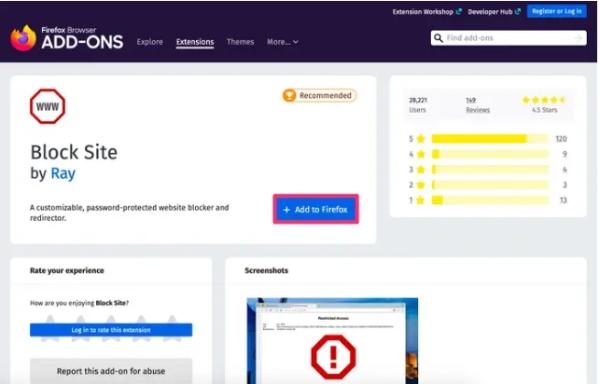


2. You’ll use a pop-up to redirect to another section using a pop-up. Now select “Add” to provide the extension with unlimited access to browser tabs, data, and notifications.
3. Once that is done, the extension will be added to Firefox. Wait for the pop-up offering additional instructions and confirm that the extension has been added.
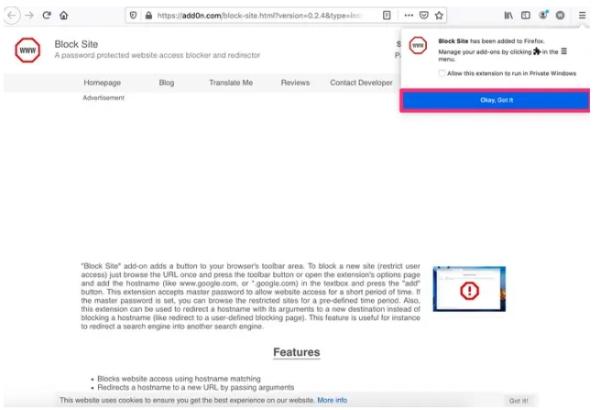


How to block a website on Firefox Desktop using the Block Site extension?
Once you have the Block Site extension on Firefox, its now time to use it to block websites. Learning the proper method to block websites will boost your parental skills and safeguard your children from inappropriate online content. Below are steps for using Block Site extension to block websites in Firefox:
1. Tap the three visible dots on the screen.
2. Select “Add Ons” to proceed. You can select “Shift + Command” if you’re using a Mac computer. However, if you’re using a regular PC, use “Shift + CTRL” to gain access to the menu.



3. Once that is done, you’ll find yourself in the settings section. Select “Extensions” to gain access to usable add-ons, which are located in the “Manage Your Extension”s” area. From there, select “Block Site” to proceed.
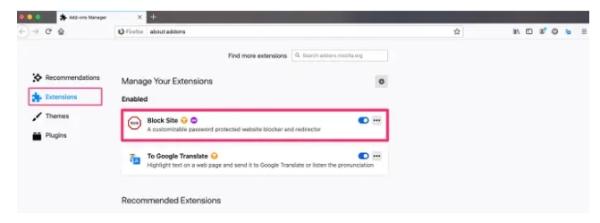


4. After you find yourself on the next page, tap on the three visible dots > “Preferences.”
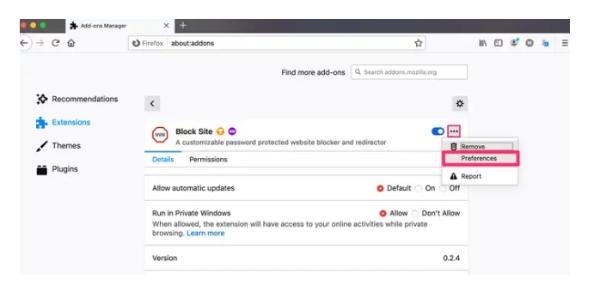


5. From there, you’ll have access to block site options page. Now follow the prompts available. Filter the setting by adding the time or day to block and other relevant details.
6. Add a master password which is designed to Block Site anytime you want.
7. Alternatively, use the “Redirect to” to add sites.
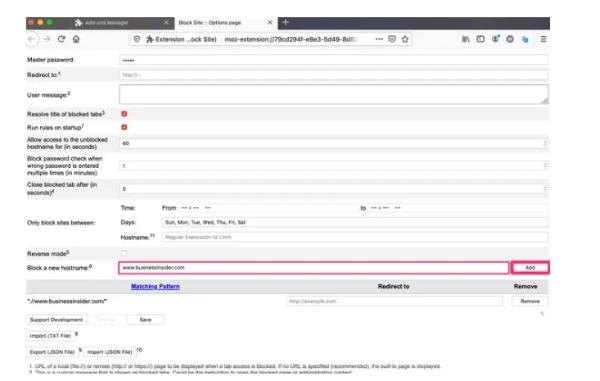


8. Once the changes have been implemented, you must add the URL to sites you need blocked using the “Block a new host name” section.
9. Now select “Add”, and you’ll see the blocked sites below the “Matching Pattern” space.
How to block trackers using Firefox enhanced tracking protection on desktop?
Firefox also has inbuilt privacy and safety settings that enable you to block trackers.
Online trackers are code or scripts embedded in websites and applications that track user behavior and collect data about their online activity. They can monitor user information, including location, browsing history, search terms, purchases, and more.
These trackers follow you around online and collect information on your browsing habits. This information can then be shared with ad companies without your consent. Some online trackers can also be used to introduce malware into your devices, resulting in serious harm.
Firefox can help you block these trackers using its enhanced tracking protection program. Here is how to block trackers on desktop:
Tap the Shield icon on the left of the address bar.



A pop-up box will appear with a button. Firefox’s Enhanced tracking protection is automatically on, so the button will be toggled blue.
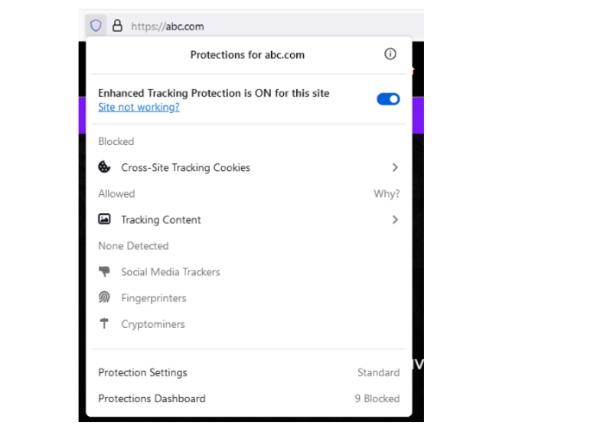


You can see any trackers that Firefox’s Enhanced Tracking protection System has blocked in the pop-up box above.
How to block website on Firefox Mobile?
You can also use your mobile device to block the Firefox website if you know the proper implementation steps. Fortunately, this section will walk you through everything you need to know to block Firefox on your iOS or Android device. Read on to learn more:
How to block websites on FireFox Mobile on Android?
Android enthusiasts can also use Block Site to block Firefox on their devices. However, you need to secure Block Site and have it on your device to proceed to the next steps. Below are a few techniques that will guide you to block websites on your Android device effectively:
Go to Google Play Store and download Block Site.
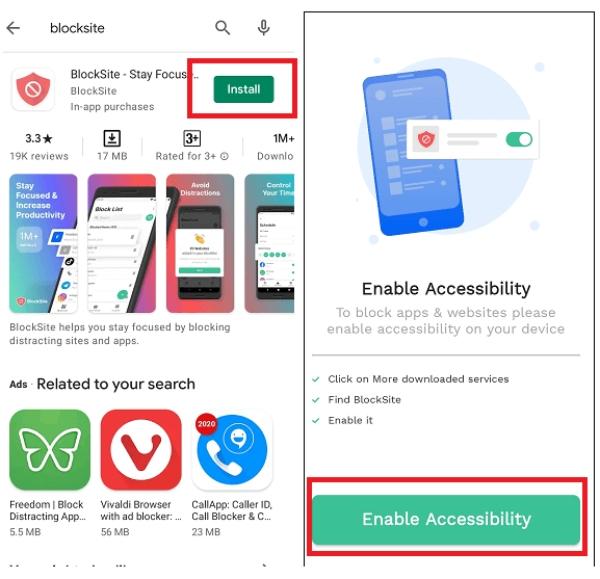


Once that’s done, enable accessibility of the app by using the prompts availed.
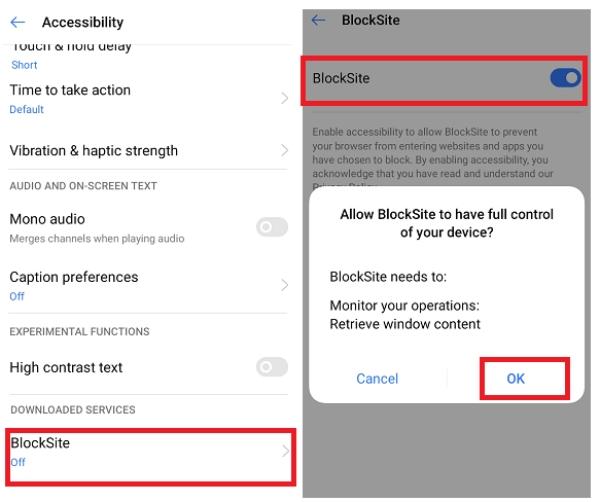


Navigate through the Block Site interface and click on the plus icon.
Insert the URL you wish to search and block it on the search bar.
The user interface also has a block selection option if you click the plus icon.
Select “Done” in the corner of the app.
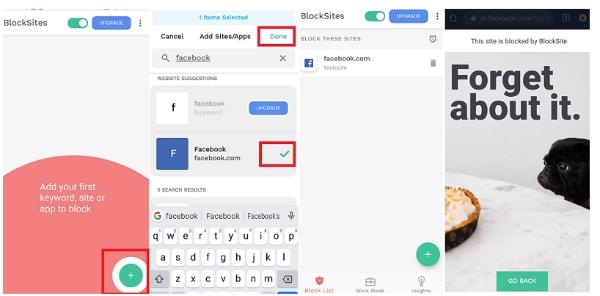


You can now see all the websites you selected on the “Block List.”
Now set website blocking schedules using the clock feature available.
How can you block websites on Firefox on iOS devices?
iOS has an incredible inbuilt system that enables users to block websites on their devices. Once you have implemented the blocking feature, all websites connected to your iCloud will be blocked. Here are a few steps you need to follow to block websites on Firefox using your iOS device effectively:
Navigate the Settings app on iOS device until you find “Screen Time“.
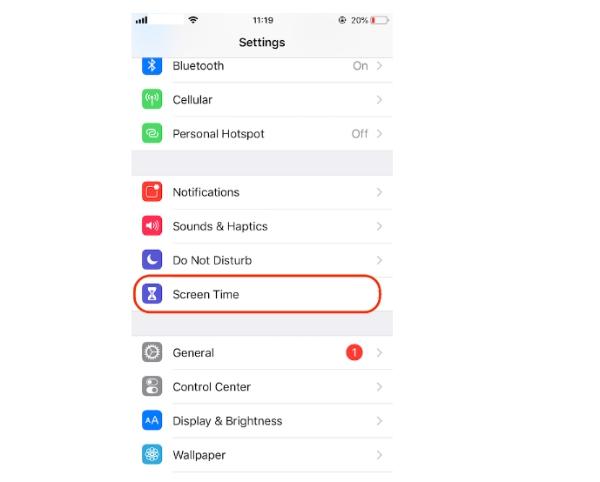


2.Now move to the “Content and Privacy Restrictions.” for more options.
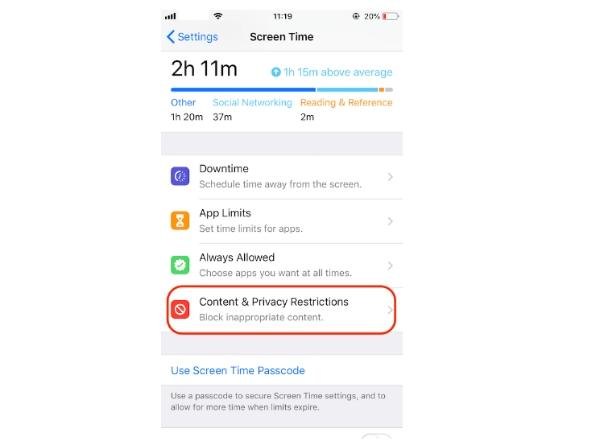


From there, click on “Content Restrictions.”
Once that’s done, click on “Web Content.”
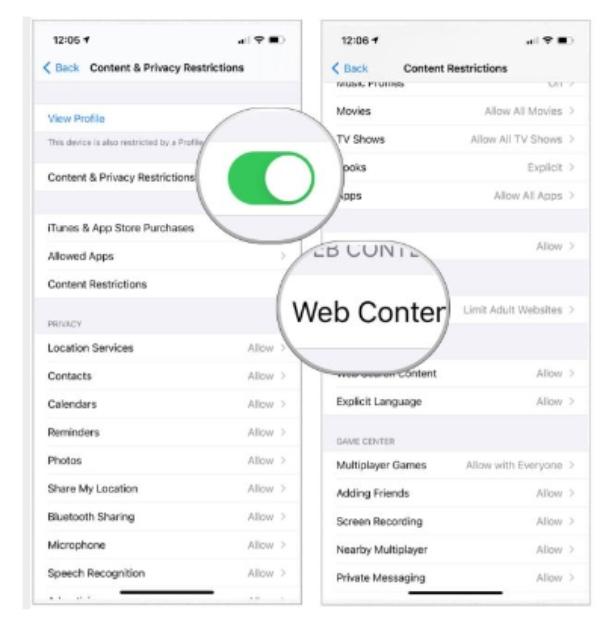


You can now click “Limit Adult Websites” to implement the process.
Alternatively, you can add the URL of the website you wish to block by going to the ” Never Allow,” section.
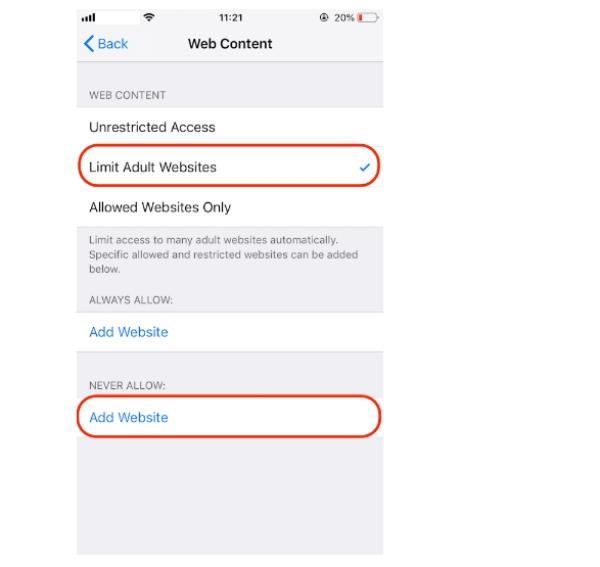


How to block trackers using Firefox enhanced tracking protection on mobile?
You can also protect your mobile device from content trackers using Firefox enhanced tracking protection.
Remember, the Enhanced tracking protection is always on by default. But you can always turn it off or choose the level of protection you want.
Here are the steps:
Tap the three vertical dots at the top of the app to access the menu.



Click on Settings > Privacy and Security > Enhanced Tracking Protection.
If you’re turning it on, you can choose one of 3 options below:
- Standard – This level protects you from all social media trackers, crypto miners and cross-site trackers.
- Strict – This level blocks tracking content. These are videos and ads that may contain a tracking code.
- Custom – This level also blocks tracking content, but now you can decide which content types to block.
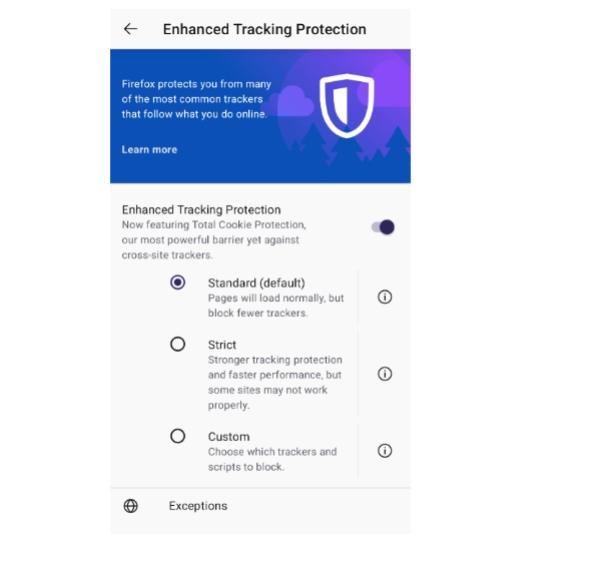


Use FlashGet Kids to block inappropriate apps
FlashGet Kids should be your best option if you’re looking for more advanced features that offer you more parental control. It offers all the relevant parental control features, such as the app and website blocker, which help manage kids’ digital activities.
FlashGet Kids has an incredible time restriction feature that limits the time kids spend on the screen. This helps boost youngsters’ self-discipline and time allocation to the appropriate activities.
Additionally, you can take parenting to the next level with FlashGet Kids by using the live monitoring feature, which lets you know where your kids are every time. To understand more about what FlashGet Kids app blocker is all about, here are some of what it offers:
Limit app usage
FlashGet Kids ensures parents have complete control over the apps kids use regularly. They can block some or all to ensure kids manage their time effectively or focus on other tasks. Moreover, you can block apps based on their category or block list, which makes it more accessible.
Furthermore, parents can also restrict notifications and annoying apps and manage kids’ cell phone addiction. This is a good feature that helps you to easily manage kids, especially if you’re a busy parent.
Add fexibility blocker rules
Users can add more rules using FlashGet Kids to ensure they manage kids’ digital activity. That means parents can set blocking time, especially when they are about to go to work. This will help kids remain focused during class time.
FlashGet Kids also has the blocking zones feature, enabling parents to block certain apps to prevent kids from accessing them in school. On top of that, you can also restrict internet usage to your preference. So take your parental skills to the next level by using FlashGet Kids.
FAQs
Is it possible to block a website on Firefox?
Yes, it is possible to block a website on Firefox. Firefox offers various methods to achieve this. One way is by using add-ons or extensions designed explicitly for blocking sites.
These add-ons allow users to create custom blocklists or blocklist specific websites, preventing them from loading or redirecting to a different page. Another method is modifying the host’s file on the computer, which can be accessed through the operating system’s file system.
How do I exclude a website from Firefox history?
To exclude a website from appearing in your Firefox history, click the menu button (three horizontal lines) and select “Library”, and then “History.” Alternatively, you can press Ctrl+Shift+H to access the history directly.
Locate the website you want to exclude, right-click on it, and choose “Forget About This Site” from the context menu. This action will remove all traces of the website from your browsing history, including saved passwords and form data. The website will no longer appear in the history list or address bar suggestions. Using this feature, you can maintain privacy and prevent specific websites from being visible in your Firefox history.
How do I delete certain websites from browsing history?
To delete certain websites from your browsing history in Firefox, click the menu button (three horizontal lines) and select “Library”, and then “History.” Alternatively, press Ctrl+Shift+H to access the history directly. Look for the websites you want to remove and right-click on them, then choose “Delete” to remove them individually.
Alternatively, you can delete multiple sites at once using the “Clear Recent History” option. Select “Browsing & Download History” and set the desired time range. This will delete the selected websites from your browsing history, ensuring they no longer appear in the list of visited sites.

